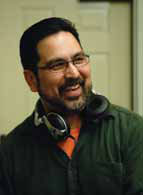Is it just my imagination, or has most of the cool new technology that has been invented over the past 20 years been in the world of audio and video? Video projectors, audio and video digital signal processing, amplified loudspeakers, touch screens, and ethernet networks have all become part of our toolboxes relatively recently.
Because of this, it is common for us to feel overwhelmed by the amount of knowledge and expertise we need to do our jobs. Have we been unfairly burdened with having to be experts on so many new things for our customers? There are endless possibilities and not enough time to learn about them!
Although it may seem like a problem unique to our era, humans have actually been experiencing this type of overload for eons. As William Powers points out in his book Hamlet’s Blackberry, even during the Renaissance “there had been a colossal expansion in the amount of available information, with no matching increase in the capacity of the human mind to absorb it. Beyond books, Europe was awash in pamphlets, advertising placards, commercial and public documents... and other types of printed matter.” It seems in our nature as a species to create more than we can handle. We’ve produced far more as a civilization than we can possibly know as an individual.
Feeling anxiety from this technology glut is much more common than feeling optimism for the future. This is partly because, psychologically, people tend to spend time on the negative and largely ignore the positive—a condition known as “positive-negative asymmetry.” Author Marcus Buckingham gives the example of a student arriving home from school having received an A in English, but an F in algebra. Parents will immediately go into problem-solving mode, spending time focusing on the F rather than taking a positive approach and inspiring the child to build on his literary talent.

In the Heath Brothers’ book Switch, they write about an idea called “bright-spot focus,” sometimes referred to as “appreciative inquiry.” In this book about effectively creating change in the world, they show how bright-spot focus can not only build on the strengths of an organization or industry, but how change can be driven from identifying the positive as opposed to problem solving the negative. I don’t imagine we’ll ever stop problem solving, but because of our proven negative bias we need to train ourselves to spend time on the positive. As much good can come from improving what we already do well as can come from fixing what we don’t. It is even likely that you will get asymmetric results, because it is generally more productive to do more of what you do well than to try to reverse your weaknesses.
So what are some of the bright spots in our high-tech world? I like comic Louis C.K.’s take on the subject. “Everybody on every plane should just constantly be going ‘Oh my God, wow,’ you’re flying and you’re sitting in a chair in the sky.” If we take this approach to our own world, we might be saying, “the flexibility we have to create whatever we can imagine using sound and images is amazing,” or, “we are incredibly lucky to be able to spend our days working with unbelievable technologies that can solve so many problems for us and our customers.”
What are we doing especially well now? Each individual company has its unique strengths. As an industry, we are getting better at making systems more usable and familiar for our users. Through social networking sites such as LinkedIn and education programs like those produced at InfoComm, we can easily show each other better ways of doing things to allow our customers to do cooler things more simply. As individuals and companies, you will need to find what you do well. It is easy to focus on what you need to do better (negative focus), but when you improve what you already do well, the results could be outstanding!
Paul Chavez (pchavez@harman.com) is the director of systems applications for Harman Pro Group. He is a usability evangelist and a futurologist. Chavez has designed a variety of audiovisual systems ranging from themed attractions to super yachts. He has also taught and written on the topics of interaction design, audiovisual design, and networking.
Appreciative Inquiry
According to the late Reverend Forrest Church, there are three simple rules to achieving happiness: be who you are; do what you can; want what you have. Although each of these can be expanded upon in great detail, at face value it’s easy to understand how living within them might very well bring true happiness in life.
Unfortunately, that’s easier said than done. Many of us naturally tend towards envy, self-criticism, and often aspire far beyond our natural capabilities. How many youngsters set out to be astronauts or the president? A few more than ever reach such esteemed heights.
But do these three tenets teach us to temper our dreams and set low goals? Or do they encourage us to realistically assess ourselves, and then create the loftiest goals imaginable based on these assessments?
The concept of Appreciative Inquiry (AI)—a term coined by Case Western professor David Cooperridge—suggests the latter. AI encourages corporations and organizations to strive for happiness in the same way an individual might— essentially, to be what they are and do what they can.
According to Cooperridge, “AI is the cooperative search for the best in people, their organizations, and the world around them. It involves systematic discovery of what gives a system ‘life’ when it is most effective and capable in economic, ecological, and human terms.” When an organization can identify its core strengths, it’s vision and purpose will be brought to life, and long-term positive change will occur.
However, one thing organizations should probably avoid is the act of wanting what they already have. We’ll leave that noble tenet of happiness to the individual.
—Chuck Ansbacher
